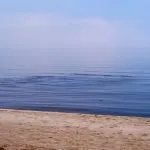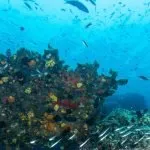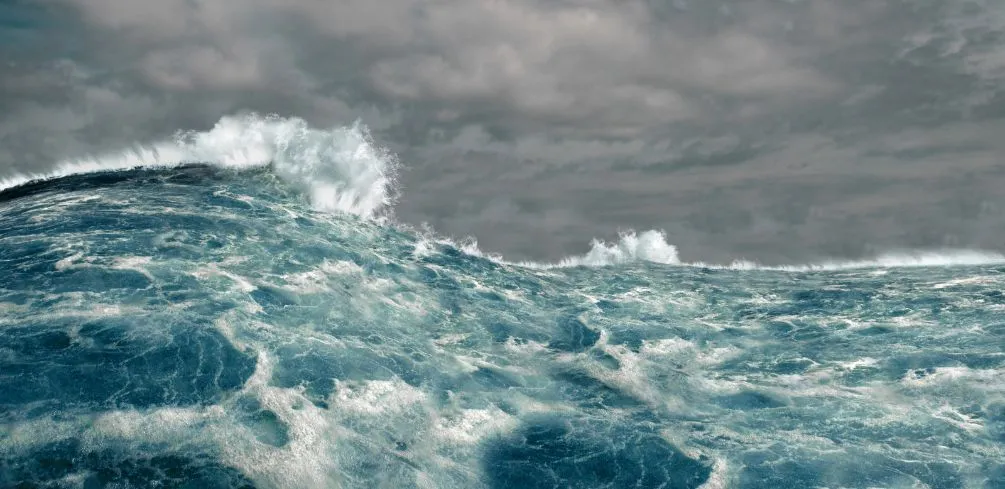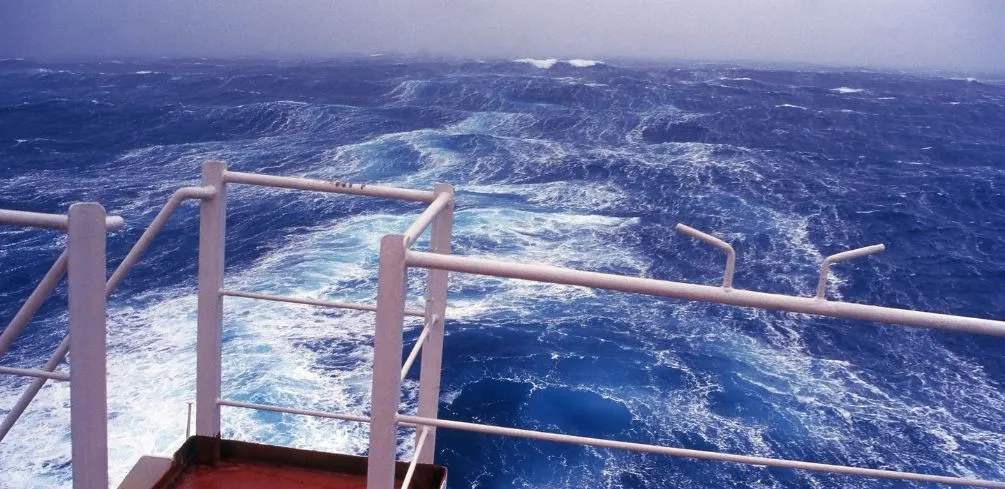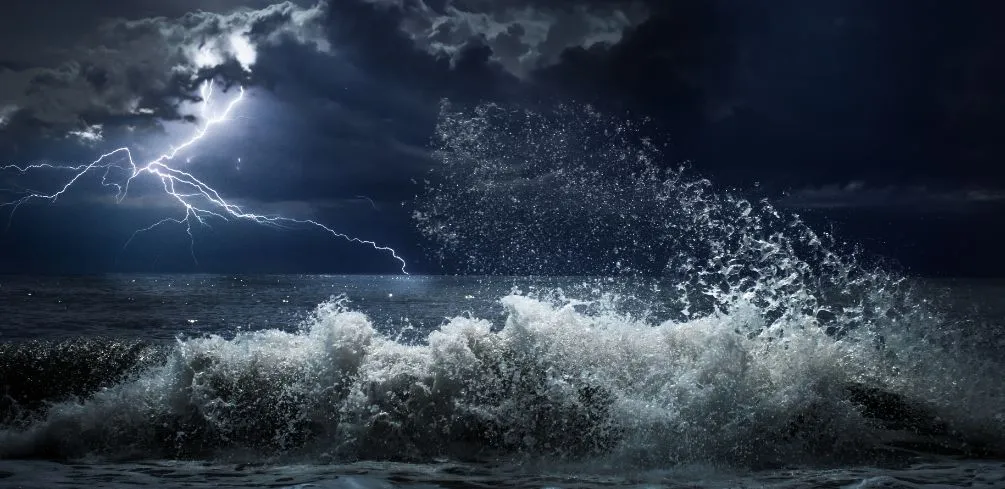Do you ever find yourself fascinated by the power of the ocean? Have you ever stood on a beach and watched as the waves crashed against the shoreline?
The ocean can be incredibly powerful, especially when storms take over. There are a variety of different types of storms that occur in the ocean, each with its own characteristics and dangers. In this article, I’m going to explain what these different types of storms are and how they can affect us.
We’re all familiar with hurricanes – they’re some of the most destructive storms that occur in the ocean. But there are other types of storms, too, such as tropical cyclones, typhoons, nor’easters, and more. Each storm has its own unique traits that set it apart from others and make them dangerous in its own way.
We’ll discuss each type of storm so that you can gain a better understanding of their power and importance.
Finally, I’ll explore how these storms can impact our lives here on land. Even if we don’t live near an ocean shoreline or frequently experience these types of storms, it’s important to understand how powerful they can be so we can stay safe during one should one come our way.
So let’s dive in and learn more about the different types of storms in the ocean!
Classification Of Storms
The ocean is a tumultuous force of nature, with storms raging and churning like a whirlpool of unbridled power. Oceanic storms are classified according to their intensity and duration, enabling us to track and categorize them more effectively. Storm classifications range from tropical depressions to major hurricanes, each requiring different levels of preparedness and response.
Tropical depressions have wind speeds of less than 39 mph and are not considered true storms. Tropical cyclones have winds between 39-73 mph and can cause light damage if they make landfall.
Hurricanes have winds higher than 74 mph and can be extremely destructive when they strike land. These three categories form the backbone of storm categorization and tracking, allowing us to better understand the severity of any given storm system.
Storms in the ocean are an ever-present danger, one that requires vigilance and careful preparation. By understanding how these storms are categorized, we can better prepare ourselves for whatever nature might throw our way.
Characteristics Of Tropical Cyclones
Tropical cyclones are a type of storm that is common in the ocean. They are characterized by their warm core and cyclonic circulation, which is when winds rotate in a counterclockwise direction.
Tropical cyclones have strong wind speeds, typically ranging from 74 mph to over 175 mph. These storms also have rain bands that can produce heavy rainfall, thunderstorms, and even tornadoes.
In addition to the powerful winds and rainbands associated with tropical cyclones, they also generate large waves known as swells. These swells can reach up to 40 feet high and become increasingly dangerous when combined with storm surges from the hurricane’s winds.
Storm surges are high walls of water pushed ashore by strong onshore winds, leading to coastal flooding and damage from the strong waves.
Tropical cyclones can cause serious destruction if they make landfall in populated areas due to their strong wind speeds and extreme weather conditions associated with them. Even if they don’t make landfall directly, these storms can still cause significant damage if they move close enough to shore.
That’s why it’s important for people living near coasts to be prepared for these types of storms when they occur in their area. Taking measures such as having an evacuation plan or having supplies readily available can help mitigate some of the risks associated with tropical cyclones.
Extratropical Cyclones Overview
In addition to tropical cyclones, the ocean is home to another type of storm: extratropical cyclones. Extratropical cyclones are large-scale weather systems that form over the oceans and can cause strong winds, heavy rain, and high waves.
Unlike tropical cyclones, which form in the tropics over warm waters and produce intense storms with high winds and rainfall, extratropical cyclones form in cooler waters outside of the tropics.
The formation of extratropical cyclones is often associated with fronts – boundaries between two air masses – either warm or cold. As two air masses meet, they must eventually mix together, which causes a change in pressure and creates an area of low pressure at the surface.
This low-pressure system acts like a vacuum, drawing in more air from its surroundings which helps the storm to develop further. The intensity of the storm depends on the temperature difference between these two air masses as well as other factors such as wind shear and available moisture.
Extratropical storms can be very powerful and dangerous if they reach land. They can cause significant damage due to strong winds, heavy rains, flooding, landslides, and coastal erosion. That is why it is important for us to understand how these storms form so we can better prepare for them when they do hit land.
Surface Storms In The Ocean
Surface storms in the ocean are like raging storms on land. They whip up strong winds, churning waters, and crashing waves that can cause immense damage to marine ecosystems. In comparison to their land counterparts, they tend to be more unpredictable and powerful due to their shape-shifting nature and the sheer volume of water they can move.
The intensity of these storms is determined by factors such as surface winds, oceanic turbulence, and wave heights. Smaller storms may cause moderate levels of disruption, such as short-lived choppy seas, whereas larger storms can create long-lasting swells that can be extremely destructive for coastal regions.
When it comes to understanding surface storms in the ocean, it is important to consider the three key elements:
- Oceanic storms have the potential to cause high levels of destruction due to their size and unpredictability.
- Surface winds play an important role in determining the severity of the storm’s impact.
- Wave heights can also contribute to increased levels of oceanic turbulence which can result in further damage to marine ecosystems.
We must recognize that surface storms in the ocean are an inevitable part of life, and our understanding of them is essential if we want to minimize their impact on our planet’s fragile marine ecosystem. It is up to us as individuals, communities, and nations to work together toward safeguarding our oceans and protecting them from further harm caused by these powerful forces of nature.
Impact On Marine Life
Now that we’ve discussed the different types of surface storms in the ocean let’s take a look at how these storms can impact marine life. Aquatic creatures are affected by changes in their environment, especially when it comes to extreme weather conditions like those brought on by oceanic storms.
Aquatic organisms have adapted over time to withstand more challenging environments and weather patterns, but they can still be impacted by sudden changes caused by storms.
Some of the ways that marine life is affected include increased levels of turbidity, changes to food sources, and alterations in the temperature of the water.
| Impact | Marine Life Affected | Implication |
|---|---|---|
| Increased Turbidity | Fish & Corals | Reduced visibility and nutrients |
| Changes to Food | Plankton & Algae | Reduced availability for predators |
| Temperature Change | Turtles & Jellyfish | Challenge for animals to regulate body |
These impacts on marine life can have serious implications for species in the area, especially if multiple storms happen in a short time period. For example, an increase in turbidity can reduce visibility and nutrients available to fish and corals, making it harder for them to find food or shelter from predators.
Changes to food sources can also affect plankton and algae populations which may reduce available prey for larger aquatic species. Finally, a change in the temperature of the water can be particularly challenging for turtles and jellyfish who rely on specific temperatures to regulate their body functions.
Overall, these oceanic storms pose a threat to many forms of marine life in various ways, such as increased turbidity levels, changes to food sources, and alterations in water temperature. It is important that we continue tracking these storms so that we can understand more fully their effects on sea life and take steps accordingly.
Frequently Asked Questions
What Is The Most Dangerous Type Of Storm?
When it comes to the most dangerous type of storm, there is no denying that ocean storms present some very real dangers. From destructive waves to powerful winds and heavy rainfall, they can cause significant damage and disrupt lives.
But what exactly makes certain ocean storms more dangerous than others? Let’s take a closer look at ocean storms and their effects on our environment.
One of the most important factors in determining a storm’s danger level is its intensity. Storms are classified as either tropical or non-tropical depending on their characteristics, with tropical storms generally being stronger and more destructive. The size of the storm also plays a role, with larger storms having more potential for destruction due to their greater area of coverage.
The type of storm also has an impact on its danger level. Hurricanes are some of the most dangerous types of storms, with high winds and intense rain capable of causing widespread destruction.
Tornadoes are another type of storm that can be incredibly destructive when they form over water, while thunderstorms can bring high winds, hail, and localized flooding.
Many other types of ocean storms can pose a threat to life and property, including squalls, waterspouts, and typhoons. Each type has its own unique characteristics that can make them particularly hazardous in certain circumstances:
- Squalls: These are sudden gusts of wind accompanied by heavy precipitation that can cause flooding or structural damage if they occur close to shore.
- Waterspouts: These tornadic-like phenomena occur when cold air from the upper atmosphere moves down toward the surface of the water in a spinning motion, bringing strong winds and sometimes hail along with it.
- Typhoons: These large storms form over warm bodies of water such as oceans and seas and have sustained winds exceeding 74 mph (119 kph). They often come accompanied by waves up to 50 feet (15 m) tall that can cause extensive damage when striking land.
No matter what type it is, an ocean storm has the potential for devastating consequences if not managed properly. It’s important for people living near coastal areas to be aware of these threats and take proper precautions to protect themselves from harm when possible.
Prevention is always better than cure when it comes to dealing with dangerous weather conditions like those produced by ocean storms.
What Are The Differences Between Tropical Cyclones And Extratropical Cyclones?
I’m sure you’ve heard of tropical cyclones and extratropical cyclones. But do you know the difference between them? In this article, I’ll explain the distinctions between the two types of storms and how they affect oceanic environments.
Tropical cyclones are intense low-pressure systems with winds exceeding 74 miles per hour. They form over warm waters near the equator and often produce dangerous storm surges.
Extratropical cyclones, on the other hand, are mid-latitude storms that form when warm and cold air masses collide. These systems typically have lower wind speeds than tropical cyclones but can still be destructive due to heavy rainfalls, powerful thunderstorms, and large hail.
The key difference between these two types of storms is their intensity in terms of wind speed, storm surge, and air pressure. Tropical cyclones have much higher winds than extratropical cyclones; however, both can cause significant damage to life and property due to their sheer strength.
Storm surge is also a major concern for both systems; however, tropical cyclones are more likely to generate larger storm surges due to their warmer temperatures which create more moisture in the atmosphere.
Furthermore, air pressure is generally lower in tropical cyclones compared to extratropical ones since they form at a greater distance from land masses where there is less friction from land features like mountains or hills.
Overall, understanding the differences between tropical and extratropical cyclones can help us better prepare for potential storms in our coastal areas by preparing for different levels of intensity in terms of wind speed, storm surge, and air pressure.
Knowing these distinctions allows us to make informed decisions about how best to protect our families and communities during these potentially devastating weather events.
How Can I Prepare For A Storm In The Ocean?
I’m sure we all want to stay safe when a storm hits, especially if it’s an ocean storm. But how can you prepare for a storm in the ocean? Knowing what safety steps to take is essential for protecting yourself and those around you. Here are some tips on how to prepare for an ocean storm.
Start with coastal preparation. This includes making sure your property is secure and that you are aware of any emergency plans that have been put in place by local authorities.
You should also make sure that your home and property are protected from potential flooding or other damage due to high winds and waves associated with storms in the ocean. Additionally, check with your local government about any evacuation orders they may have in place before a storm arrives.
Emergency planning is key when preparing for an ocean storm. Make sure you have a plan in place on what to do if a storm occurs while you’re out at sea or near the coast, as well as when it’s time to evacuate, if necessary.
Have supplies ready such as flashlights, radios, food, water, and first aid kits, so you can be prepared if things get bad. Also, consider taking extra precautions like having access to backup power sources or alternative means of communication so you can reach out for help if needed.
Finally, always practice storm safety when heading near the coast or out at sea during a storm. Pay attention to weather alerts and other warnings issued by authorities and avoid areas where there may be high waves or strong currents so you won’t be caught off guard by powerful winds or rough seas associated with storms in the ocean.
Remember that safety should always come first when dealing with these types of unpredictable events!
What Is The Average Duration Of A Storm In The Ocean?
The average duration of a storm in the ocean can vary significantly. According to a study conducted by the National Oceanic and Atmospheric Administration (NOAA), the average ocean storm lasts anywhere between one and four days. However, some storms may last much longer, depending on their intensity.
In terms of preparing for an ocean storm, it’s important to be aware of the following key points:
- Have an emergency plan in place that outlines what steps you should take if a storm is approaching.
- Make sure your safety equipment is up to date and easily accessible in case of an emergency.
- Take steps to protect your property, such as boarding up windows or moving valuable items to higher ground.
It’s also essential to pay attention to weather reports and warnings when planning activities near the coast. Doing so will help you stay safe and minimize potential damage from a powerful storm.
Additionally, don’t underestimate the power of an ocean storms; they can cause flooding, high winds, and waves that reach incredible heights. Taking precautions before heading out into any body of water is always advised, as storms can appear quickly with little warning time.
By taking proper safety precautions and being prepared for a potential ocean storm, you’ll be able to reduce the risk of harm or property damage caused by these powerful forces of nature.
What Are The Effects Of Storms On Coastal Communities?
When we look at the effects of storms on coastal communities, it’s important to note that these events can be devastating. Coastal flooding, storm surge, and infrastructure damage are just some of the potential consequences of a powerful storm. On top of this, there can also be severe economic impacts as well as disruption to the local ecosystem.
To start with, let’s look at how coastal flooding affects coastal communities. Storm surge is when water is pushed by strong winds onto land, which causes flooding along the coast.
This type of flooding can cause immense damage to homes and businesses in a short amount of time. Additionally, it can create hazardous conditions for those in the area and make it difficult for people to evacuate safely.
The economic impact of a storm on coastal communities can be significant too. Infrastructure such as roads, bridges, and power lines may be damaged, which could lead to disruptions in services.
Also, fishing industries may suffer due to lost equipment or contaminated waters, making it difficult for them to work. Finally, tourist destinations can experience downturns due to damaged beaches or other attractions that have been destroyed by the storm.
These effects from storms are far-reaching and can have long-term implications for those who live along the coastlines and depend on its resources for their livelihoods. It’s important that we take steps to prepare for future storms so we can mitigate their potential damage and help protect our vulnerable coastal communities from harm.
Conclusion
I have learned about the different types of storms in the ocean and the potential danger they pose to coastal communities. It is important for us to be prepared for these events, as well as to understand their effects. Tropical cyclones and extratropical cyclones are two distinct storm types with varying durations and effects.
The consequences of storms in the ocean can be devastating, so it is essential that we take all possible steps to protect ourselves and our communities from them. We must stay informed about weather conditions, avoid areas that may be at risk, and develop emergency plans for evacuation when necessary. By taking these precautions, we can help ensure our safety during a storm.
The power of nature can never be underestimated; however, with knowledge and preparation, we can lessen the damage caused by storms in the ocean. Let us use our understanding of these powerful events to protect ourselves and those around us.

